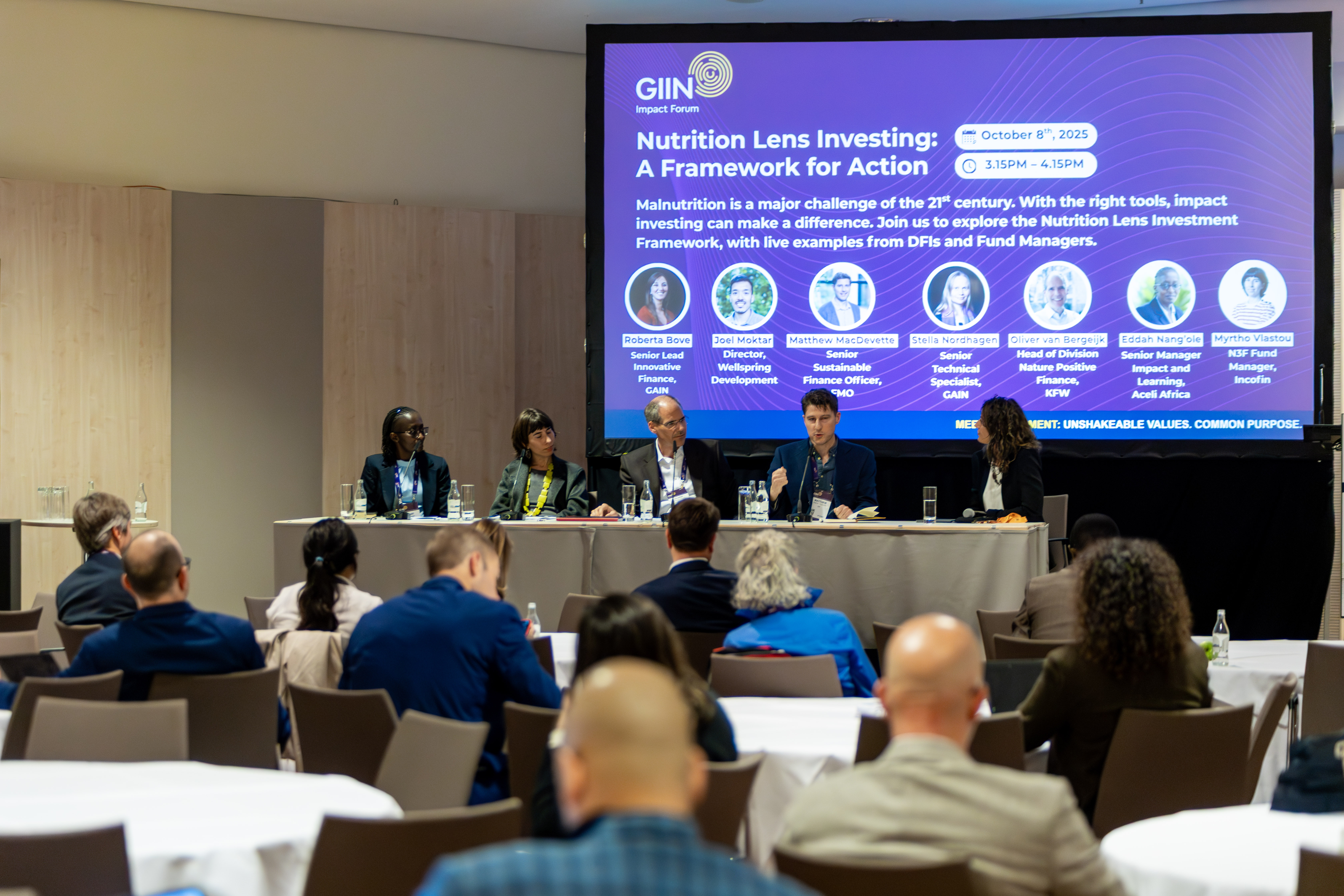Investing in nutrition isn’t just possible, it’s smart. That’s the key message that sticks with us a few weeks after the GIIN Impact Forum 2025, where we organised a session, “Nutrition Lens Investing: A Framework for Action”.
Moderated by Roberta Bove (GAIN), the discussion brought together a diverse mix of development financiers, fund managers, and impact practitioners to explore how investors can move beyond broad food security goals to intentionally target nutrition impact, focusing on the quality, not just the quantity, of food reaching consumers.
Following a technical presentation by Stella Nordhagen (GAIN), who grounded the conversation by clearly defining “(safe and) nutritious foods,” the panel showcased how development finance institutions (DFIs), blended finance innovators and fund managers are putting nutrition investing into practice by sharing their approaches, challenges and opportunities. The panel featured voices from across the impact investment spectrum, including Matthew MacDevette (FMO), Oliver van Bergeijk (KfW), Eddah Nang’ole (Aceli Africa), and Myrtho Vlastou (Incofin’s N3F Fund), sharing how nutrition is being embedded into their respective investment strategies and incentive models. From Aceli Africa’s platform aligning incentive lending criteria with nutrition outcomes to FMO’s ongoing efforts to incorporate nutrition into its impact approach, the message was clear: nutrition can be investible, delivering both social and financial returns.

A key highlight of the session was the launch of the NutrInvest tool, developed by Wellspring Development with funding support from USAID and GAIN’s Nourishing Food Pathways programme. NutrInvest is a simplified, sector-wide tool built off the nutrition screening criteria for the Nutritious Foods Financing Facility (N3F), which allows investors to screen portfolios for nutrition impact potential. As Joel Moktar (Wellspring) demonstrated, the tool offers an actionable entry point for impact fund managers and DFIs to understand where nutrition opportunities lie either in individual investments or at portfolio level. What resonated most among the panellists and in the audience was the shared recognition that tools like NutrInvest, combined with intentional capital and strong partnerships, can shift the narrative from seeing nutrition as a development concern to recognizing it as a core investment theme.
Following conversations at and around the GIIN on how investors are operationalizing impact themes, we are encouraged to see the growing momentum around nutrition investing. But to scale it, we must find new and better ways of building investable pipeline and dealing with currency risk. We must keep building the evidence, deepening collaboration, and, above all, ensuring that impact capital truly nourishes people as much as it grows portfolios. Through the N3F, GAIN is helping to prove that nutrition is not only impactful but also investible. We call on the impact investing community join us in embedding nutrition into their investment strategies or even better to make nutrition a central theme to deliver both financial returns and a better future.
We encourage you to reach out to Roberta Bove ([email protected]) and Polly Mwongera ([email protected]) if you’re keen to explore how to embed nutrition within your investment strategy. Let’s together shift the narrative from food production to nutrition access!